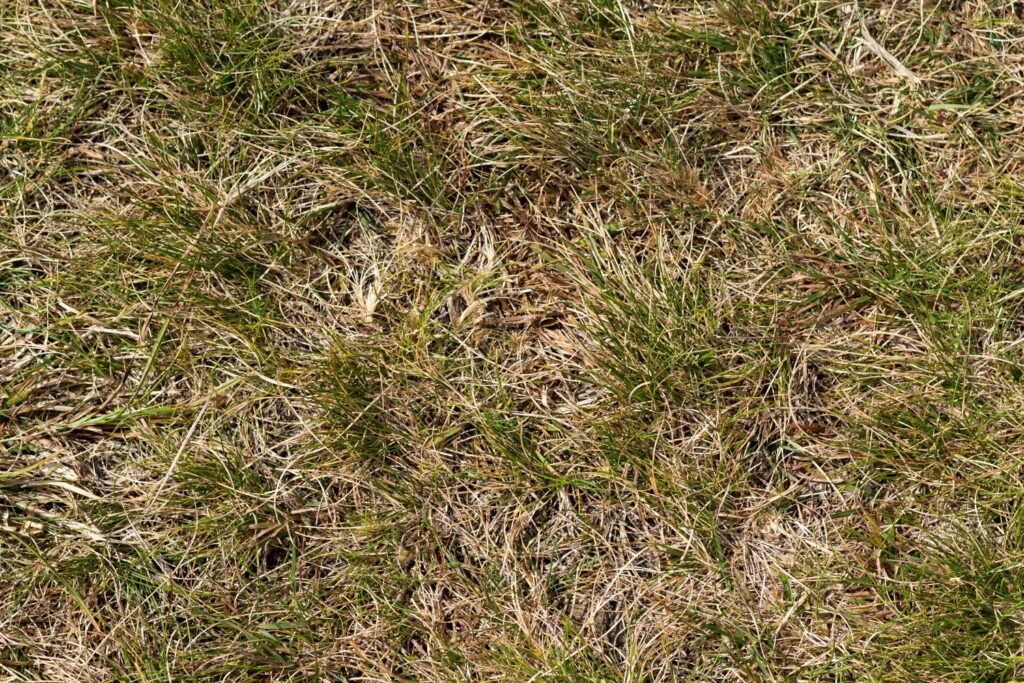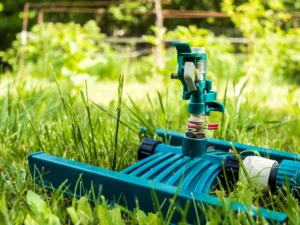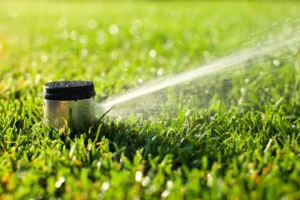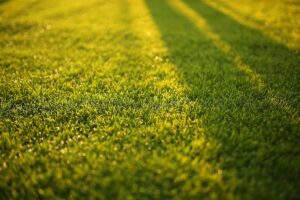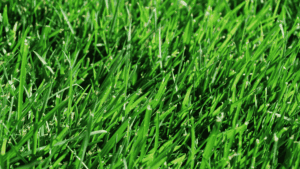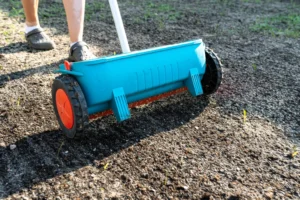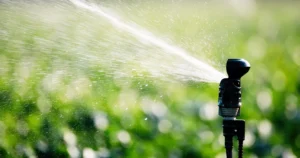Let’s address burnt grass. That crunchy, yellowish pile of grass that used to be your beautiful green pride and joy? We’ve all experienced it. Whether it was fertilizer burn, a heat wave, or just one too many times skipping watering, the reality is that this can make your entire yard look tired.
Don’t make the mistake of panicking! We’ve worked with plenty of homeowners in Atlanta to fix their grass after a heat-related episode, and we have helped them reclaim their properties better than they were before! So, grab yourself a cold drink, put your feet up, and let’s walk through the likely reasons your lawn may be struggling – and more importantly, fix it!
What Exactly Is Burnt Grass?
Let’s get one thing straight first: what do we mean by burnt? No, your grass is not on fire. Burnt grass is a generic term covering areas that turn yellow, straw-like, or brown due to stress. Fully developed burnt grass can emerge in patches of stressed turf grass; it is usually caused by stresses such as heat stress in grass, irrigation errors, or applying the wrong lawn product types.
Symptoms of burnt grass include:
- Yellow or brown patches in the lawn
- Dry, brittle grass blades or curled edges
- Crunching sounds when walking on the area
- Uneven coloration in the lawn near sprinkler heads or shaded areas
Sound familiar?
Common Causes of Burnt Grass in Atlanta
1. Fertilizer Burn Effects
Fertilizer is an incredibly valuable thing…. until it isn’t. Applying excessive nitrogen or fertilizing during intense heat can cause a chemical burn, which drains the moisture out of your turf from the inside out.
Signs:
- Sharp, clear burn lines
- Burn appears soon after fertilization
- Damage is more concentrated in spots where the area was “double-dosed”
Quick Fix:
Deep-water the area over several days to help dilute fertilizer salts. The rest of the lawn may still look ok, but until this area is in recovery mode, do not apply anything further to diminish turf stress levels.
2. Watering Mistakes
Are you overwatering or underwatering? Both can be problematic. Summer lawn damage often occurs from one extreme or another, especially in the afternoon furnace of Atlanta’s summer sun.
Signs:
- Brown or yellow patches in areas of poor drainage
- Crisp, sunburn, and spots from water evaporating faster spots
- Overwater—soggy soil; under water—dry, cracked soil
Quick Fix:
Change the watering routine to the early morning. Utilize the “soak and dry” method, which involves deep watering approximately 2–3 times a week, rather than a daily light sprinkle.
3. Sunburnt Lawn Causes (AKA Heat Stress)
When temperatures are consistently 90°F or higher (as is the case in Atlanta), your lawn starts to break down. When combined with humidity and direct sunlight, it can ultimately lead to turf burn.
Signs:
- Green lawns that have south-facing exposure and full sunlight.
- Dry spots near black iron edging or pavement.
- A dull, faded, or bleached-out appearance.
Quick Fix:
- Increase shade by incorporating trees, shrubs, or pergolas in areas exposed to full sunlight.
- Aerate to enable soil to take in moisture, and apply a heat-tolerant turf blend in areas that frequently get too hot.
4. Dull Mower Blades and Lawn Maintenance Issues
The issue may not be what you’re doing, but how you are doing it. Having a dull mower blade is a sign of a mower that tears grass, rather than a clean cut, and causes stress that will produce discoloration in the grass. Coupled with mowing too short and doing it during higher heat, your lawn is not going to be happy.
Signs:
- Frayed edges.
- Discoloration in grass, even in well-watered lawns.
- Sudden decline following mowing.
Quick Fix:
- Sharpen mower blades monthly during peak mowing season.
- Mow high—in most cases, 3 inches to cut the grass and provide shade for the soil to retain moisture, or it will be a futile effort.
5. Pet Spots and Localized Turf Damage
If you have a furry friend that has their favorite target spot to help them relieve themselves, chances are you have seen little rings of yellow spots common around a favorite spot in the grass, surrounded by a greener grass. That yellow is from nitrogen concentration in the pets’ urine; in a sense, it’s like a small burn from the fertilizer that’s in the grass.
Signs:
- Circular or irregular yellow spots in the lawn.
- Progressive greener edges around the burn.
- Signs typically occur near fences, walkways, and land corners that have shade cover.
Quick Fix:
Immediately wash pet spots with water. Train your pets to use alternative potty areas, and if necessary, consider reseeding with a urine-resistant type of turfgrass.
Recovery Timeline: How Long Before It’s Green Again?
The reality is this: salvaging a brown lawn does not happen overnight. Depending on the amount of damage and how much solution you applied, you can expect recovery between one (1) and six (6) weeks later.
A casual timeframe:
- Mild heat damage – 7 – 10 days with proper watering
- Fertilizer burn – 2 to 3 weeks after flushing
- Dog pet damage or dead spots – 3-6 weeks after reseeding or plugging
- Drought sign with root die back – complete recovery may call for overseeding in the fall
Pro Tip – If the lawn does not turn green overnight, don’t panic! Grass roots are remarkably tough when you treat them right, peaking here in warm-season turf zones like Atlanta.
Turf Burn Solutions: The Road to a Healthy Lawn
Okay, now that you know the reasons for burnt grass, here’s what to do next:
Step 1 – Stop all Chemicals
Do not use fertilizer, herbicides or pesticides until the lawn starts to show indications of bouncing back.
Step 2 – Deep Water, Not Sprinkle Water
Run a soaker hose or irrigation system in the early morning. One (1) to one and a half (1.5) inches of water a week is generally sufficient spread out over two to three (2-3) watering sessions.
Step 3 – Shade Strategically
Use whatever you can, umbrellas, shade cloth, or something temporary over the worst spots, especially south- or west-facing lawns.
Step 4 – Overseed if Needed
If areas are completely dead, rake out thatch and overseed with Bermuda or Zoysia, types of turf that are appropriate for Georgia.
Step 5 – Aerate + Compost
Aerate compacted soil, and give that aerated soil a thin layer of compost on top of it to get some microbial life and root growth.
🌟 Ready to Bounce Back?
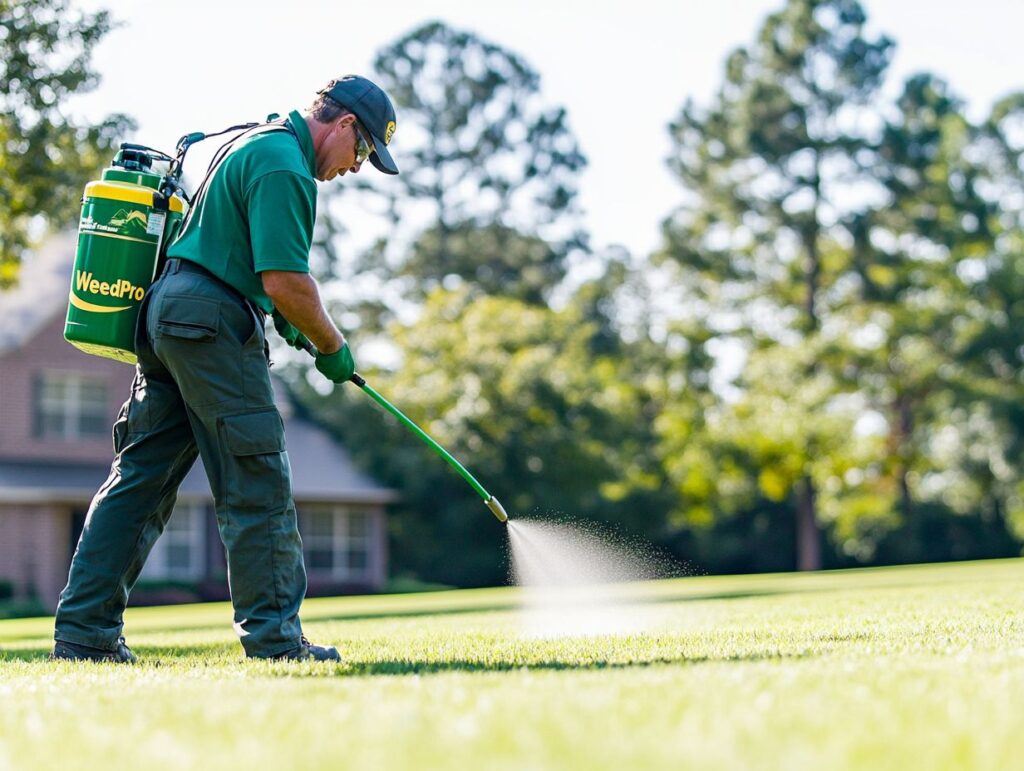
Don’t let a brown patch get you down, let Weed Pro help restore your lawn and be beautiful.
Let us take the guesswork out of watering, mowing, and applying your chemicals so that your lawn doesn’t merely survive the Atlanta heat it begs to thrive in it.
👉 Reach out to Weed Pro for your customized lawn recovery strategy today.
❓FAQ: The Stuff You’re Still Wondering About
Can you paint burnt grass green for a quick fix?
Yes! There are commercial lawn colorants made with plant-safe pigments that can temporarily restore color to brown patches. They’re great for photo ops or home showings, but they don’t replace real recovery. Always treat the underlying issue first.
Does burnt grass always grow back?
Not always. If the crown of the grass plant is still alive, recovery is possible. However, if the burn is severe—especially from fertilizer or long-term drought—you may need to reseed or patch the area with sod or plugs.
How can you tell if your lawn has heat stress or a disease?
Heat stress usually presents as uniform discoloration in areas exposed to full sun. Lawn diseases often have irregular shapes, fuzzy growth, or spots on the blades. If you’re unsure, Weed Pro can help diagnose the issue with a professional lawn assessment.
👉 Up Next
Want to replace that burnt patch with something plush and soft underfoot? Dive into our next guide: Zeon Zoysia Grass: Care, Maintenance & Tips.

